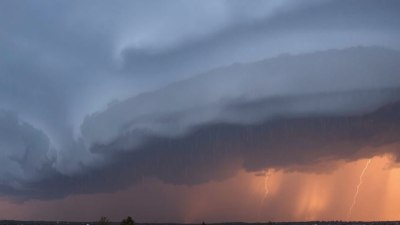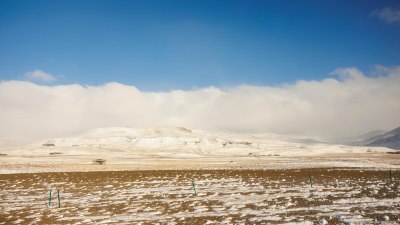Where the Seasons Run on Their Own Mysterious Schedules
Explore the unique rhythms of nature where seasons follow unusual patterns, revealing the mysteries of climate.

Image by bedneyimages on Freepik
Seasons have always fascinated humanity, shaping the rhythms of our lives, cultures, and economies. Traditionally, we expect seasons to follow a predictable pattern: winter gives way to spring, spring blooms into summer, and summer yields to autumn before the cycle begins again. However, in various parts of the world, seasons do not adhere strictly to these expected patterns. Instead, they run on their own mysterious schedules, influenced by a multitude of factors including geography, climate changes, and local ecology. In this article, we will delve into some curious instances of how seasons operate differently across the globe, illustrating the beauty and complexity of nature’s timing.
The Tropical Seasons: Wet and Dry
In tropical regions, especially near the equator, the concept of four distinct seasons is less applicable. Instead, these areas typically experience two primary seasons marked by rainfall: the wet and the dry seasons. The timing of these seasons can vary greatly depending on geographic location. For instance, in regions such as Southeast Asia, monsoon seasons can dictate the agricultural calendar, with planting taking place just before the rains begin. In contrast, Central and South America often experience a more pronounced dry season followed by intense and frequent rainfall, supporting lush vegetation growth in the wet months. This dual seasonal system can have profound impacts on local ecosystems and agriculture, as farmers learn to adapt to these shifts in weather.
Polar Regions: A Different Kind of Rhythm
Moving towards the extremes, the polar regions offer another unique seasonal experience characterized by extreme variations in daylight and temperature. In places like Alaska or Greenland, winter brings months of darkness, while summer can result in continuous daylight. In these regions, the seasonal transitions are less about temperature changes and more about the nature of daylight. The flora and fauna adapted to such conditions also exhibit their unique timing; for example, many animals enter hibernation during the long winter months, while plants may remain dormant, only to spring to life when the sun returns. Thus, the ‘seasons’ at the poles may run on a schedule dictated by sunlight rather than strictly by temperature.
Microclimates and Their Seasonal Variations
Another intriguing concept in understanding seasonal variation is the phenomenon of microclimates. These localized environmental conditions can result in dramatically different weather patterns and seasonal timings, even over short distances. For example, in regions like California, a coastal area can enjoy a mild winter, while just a few miles inland, temperatures might drop significantly. These subtle shifts can create distinct seasonal experiences. In mountainous regions, the elevation can alter weather patterns, creating different climates and seasonal timings within the same geographical area. As such, inhabitants learn to recognize and adapt to their specific microclimates, truly experiencing a seasonal rhythm tailored to their unique environment.
Climate Change and Seasonal Shifts
In recent years, climate change has become a significant factor influencing seasonal changes across the globe. Scientists have documented how temperature increases are altering traditional seasonal patterns, causing phenomena such as earlier springs and extended fall-like conditions. In some regions, migratory patterns of birds and the blooming of plants occur earlier than they have historically. This misalignment can disrupt ecological balances and threaten local agriculture. Farmers who rely on specific seasonal cues may find their crops vulnerable to unexpected frosts or extended periods of heat that were not typical of earlier seasons. As humanity grapples with these changes, there is a growing need to understand how to adapt to these shifting seasonal calendars.
Unique Seasonal Events Around the World
In addition to the standard seasonal shifts, many locations host peculiar events that highlight the unique experiences tied to their environments. For instance, in Japan, the cherry blossom season, or 'sakura', has become a culturally significant springtime event, attracting visitors from around the globe. The timing of this flowering varies year to year and is closely monitored by enthusiasts known as 'hanami.' Similarly, the Great Migration of wildebeest in the Serengeti demonstrates how seasonal cycles dictate animal movement, creating a stunning spectacle that drives both ecological balance and economic opportunities through tourism. Such events illuminate the intricate and often unpredictable dance of seasons within specific locales.
The Cultural Impact of Variable Seasons
The variability of seasons can also have a profound impact on cultural practices, holidays, and traditions. Many indigenous cultures have closely tied their calendars and rituals to their understanding of local seasonal changes. Thanksgiving in the United States, for example, coincides with the autumn harvest, allowing communities to express gratitude for the bounty of the land. Similarly, many communities across the globe celebrate the arrival of spring with various festivals, each with its own unique cultural significance. This interplay between seasons and culture highlights how deeply intertwined human experiences are with nature’s unpredictable rhythms.
Adaptations to a Changing Seasonal World
As our world becomes increasingly interconnected with climate realities, adaptations are required to cope with shifting seasonal patterns. This includes alterations at both personal and community levels. Farmers are adopting new techniques, such as altering planting schedules and crop varieties to better align with unpredictable weather. Urban planners are also tasked with creating resilient infrastructure that can withstand extreme weather events tied to seasonal shifts. Wildlife conservation efforts are increasingly focused on protecting habitats that may be pushed out of sync due to climate changes, emphasizing the need for adaptive management strategies. These adaptations remind us that while seasons may run on their own mysterious schedules, humanity holds the power to respond and adjust.
The Mystery of Seasonal Rhythms
Ultimately, seasons are more than just weather patterns; they are integral to life on Earth. While the traditional understanding of seasons remains predominant in many cultures, a deeper exploration reveals a rich tapestry of how they operate across diverse landscapes. From the tropics to the poles, from microclimates to the effects of climate change, the mysteries of seasons provoke awe and wonder. Understanding this complexity not only enhances our appreciation for nature but also fosters a desire to preserve and adapt to the enigmatic rhythms that govern our world. As we continue to navigate its changing patterns, let us remain mindful of the intricate connections we share with our environment, embracing each season as a unique gift.











